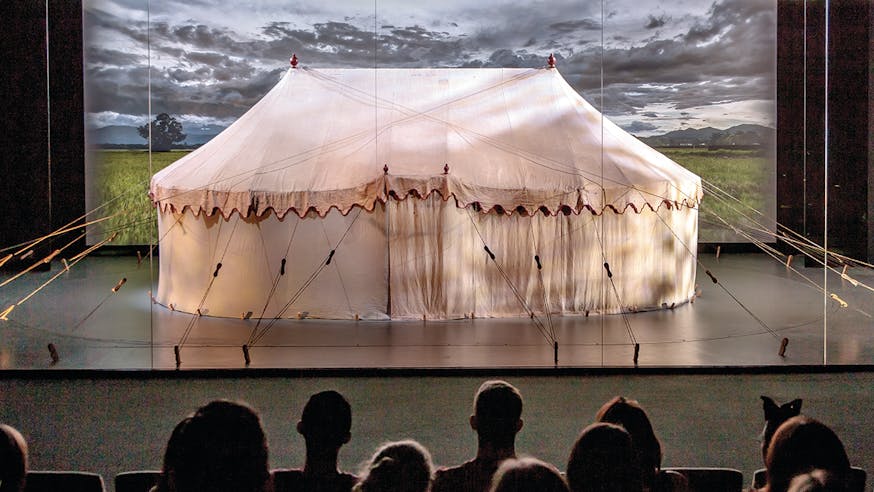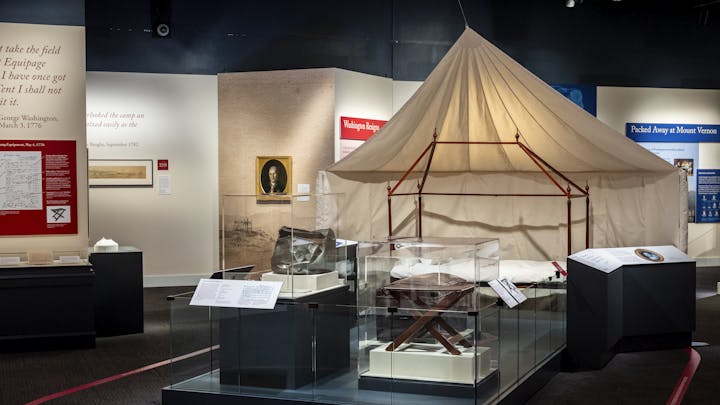Read the Revolution
Death or Liberty
February 14, 2024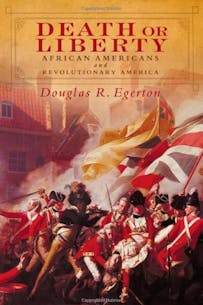
Purchase the book from Oxford University Press.
The American Revolution brought questions about liberty and equality to the forefront of popular discourse. All this new talk inspired people of African descent to start their own revolution – an often personal fight for their freedom and equality. While the Revolutionary War did not accomplish an end to slavery, it did provide people of African descent with new opportunities to advocate for, and in some instances secure, their freedom.
In his book, Death or Liberty: African Americans and the Revolutionary War, Douglas Egerton explores the individual contributions, stories, and history of people of African descent and their involvement in the Revolutionary era, including how they shaped the larger landscape of America. Egerton opens this book with the story of William Lee, who was enslaved by George Washington and served as the Commander in Chief’s personal servant throughout the Revolutionary War.
Read more about Lee and how his experiences in the Revolutionary War impacted him later in life in this excerpt.
Excerpt
The young officer [George Washington] who purchased William, fresh from his successes during the Seven Years' War (known in the colonies as the French and Indian War), was riding through his home county of Westmoreland. Washington either heard of the estate sale at a roadside tavern or read a handbill. The ambitious planter, busily acquiring laborers for his estates, noted four slaves for sale. Two of the young men, Will and Frank, were mixed-race brothers, but Adam and Jack were banished to the fields, Frank Lee was dressed in the garb of a butler and installed in the living quarters in or near the big house. Older bondmen taught Will to care for his master's clothes and hair—and, rather more important, to quietly anticipate his every whim?...
Each morning, Washington rose early to survey his lands, but William rose earlier yet to lay out his clothing for the ride. On one occasion, Lee accompanied his master, and Washington, whom Thomas Jefferson later praised as the "finest horseman of his age," was pleased to discover that Lee exhibited a natural affinity for the saddle. Like all Virginia gentlemen, Washington enjoyed the hunt, and in addition to his duties as valet, William was placed in charge of the hounds. George Washington Parke Custis, Martha's grandson, later described Lee as a "fearless horseman" who galloped "at full speed, through brake or tangled wood." Lee was "sturdy, and of great bone and muscle," and when mounted upon Chinkling, his favorite jumper, with a French hunting horn slung across his back, Lee raced after the foxes "in a style at which [other] huntsmen would stand aghast." The two men often hunted together three times a week. But traditional conventions of race and servitude, together with Washington's studiously mannered behavior, kept them from ever forming—or at least acknowledging —the sort of friendship that might have arisen had Lee been born free and white.
Sign Up
Get biweekly Read the Revolution featured excerpts right to your inbox.
The growing crisis with Britain brought new responsibilities for Washington. For Lee, as was the case with most African Americans, the rift brought new opportunities. The blending of egalitarian ideals with the disruption of war emboldened slaves throughout the colonies to claim the same liberties as white Americans, In the fall of 1774, as Washington put his affairs in order before leaving for the spring meeting of the Second Continental Congress, he invested fen shillings "for shoes, et.," for Lee, as it would hardly do for his vale to arrive in Philadelphia wearing the scuffed boots of a huntsman. Prior to 1775, few Virginia-born slaves saw much of the world beyond their master's gatepost, but the chaos of war altered the lives of thousands of bond-people. As Lee and Washington galloped north, Williams's strange life grew stranger still in that he was flying with his master, rather than from one?
On the long road to Philadelphia, William had time to think. Lord Dunmore, the last royal governor in Williamsburg, was about to offer freedom to any slave or indentured servant who would carry a musket in the service of King George. Washington's estate would make an attractive prize for the redcoats. The general's nervous overseer admitted that the slaves at Mount Vernon regarded liberty as "sweet." There "is not a man [among] them," he admitted, "but wou'd leave us, if they believ'd they could make their escape." For white Americans, Britain was the very symbol of political oppression, but for those in servitude, English pickets meant liberation — if also the expectation of military service. Before the war's end, nearly fifteen thousand Africans and African Americans accepted Dunmore's offer; five thousand more, the majority of them from the nearly all-white New England states, fought on the Patriot side. Still others simply took advantage of the confusion of war to slip away from their masters' service. In a city such as Philadelphia, Lee might vanish into a back alley while on an errand for Washington and then either ride north to join the British or try to pass as a free man. But for the past seven years he had labored as a house valet, a comparatively easy post for a slave. If he failed in his escape, Lee would almost certainly be sold into the fields, and so he had to weigh his options—and his loyalties—with enormous care."
Any thoughts William had about making a run for his freedom may have been stayed by disquieting rumors within the black community that most of the bondmen who reached British lines were employed as military laborers. For every slave like New Jersey's Titus, who rose through the ranks and achieved the honorary title of Colonel Tye, dozens more dug trenches, cooked meals, and polished boots. Whether they found themselves in Loyalist or Patriot ranks, the casualty rates were ghastly, as white officers on both sides regarded them as little more than cannon fodder…
As he rode west from Yorktown, Lee, like most slaves, had prayed that the independent Republic would fulfill its promise of freedom and liberty to all Americans. Lee's proud adoption of a surname, his demand that he be allowed to marry a free woman of Philadelphia, and even his elegant clothing reflected the optimism and self-sufficiency typical of his generation. So too was his manner of liberation characteristic of Chesapeake bondpeople, since Washington was just one of many planters who found it problematic to free his slaves during his lifetime. Long before Lee's death in 1828, it was all too clear that the Revolutionary generation had failed to embrace the opportunities offered by independence—and perhaps had doomed the Union to civil war. The number of enslaved Americans rose steadily over the years, from roughly 351,000 in 1760 to 893,041 by 1800, 35,946 of whom resided in the North. Even Gordon Wood has conceded that by the end of the Revolutionary era, despite manumission in the northern states, there were "more slaves in the nation than in 1760." Lee died a tragic symbol of the Republic, crippled by its inability to live up to its own Revolutionary ideals, and half free at best.
Douglas R. Egerton, Death or Liberty: African Americans and the Revolutionary War (Oxford University Press, 2011).
Tags
Learn More
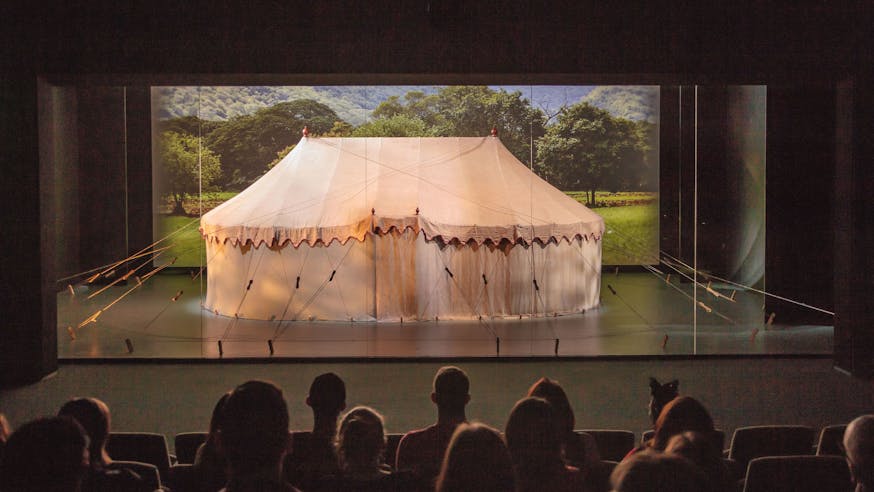
Presidents Day Weekend 2024: Witness to Revolution Exhibit Opening
February 17-19, 2024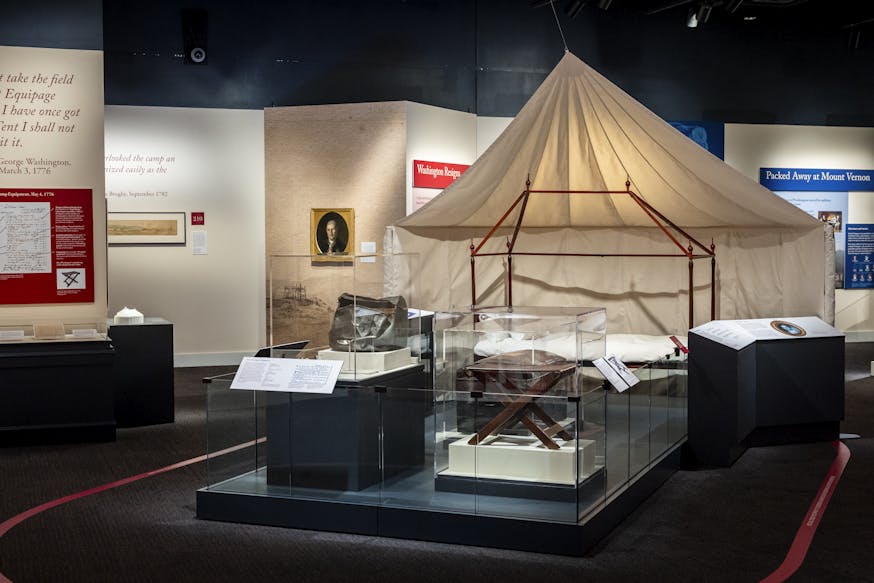
Witness to Revolution: The Unlikely Travels of Washington's Tent
Now Open Through January 5, 2025